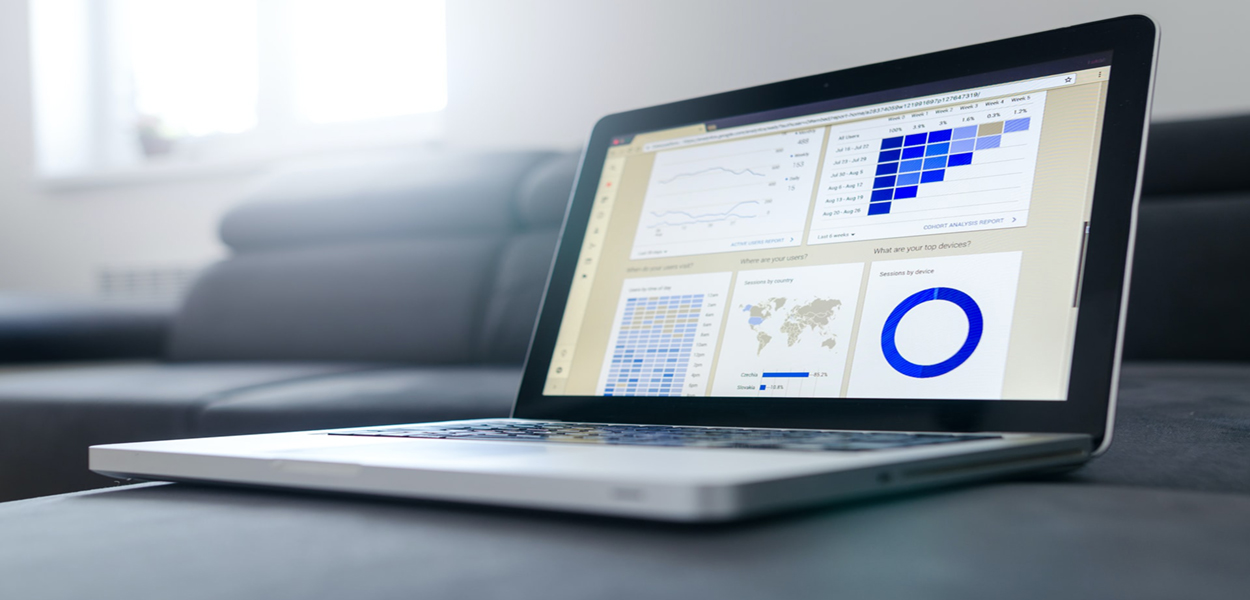Data Science and Business Analytics
Organizations all over the world are examining leveraging data science and analytics for improved business performance. As noted by Forbes, data-driven companies are 23 times additional possible to acquire customers and 19 times more potential to be profitable. There’s more to data than meets the eye with this articulative data science guide.
What is data science?
Data science is the specialization of applying advanced analytics techniques and scientific codes to extract valuable information from data for business decision- making, strategic planning, and other uses. It's increasingly crucial to businesses: The insights that data science for business develops and, supports the organizations improve operational efficiency, identify new business opportunities and enhance marketing and sales programs, among other benefits. Ultimately, they can show competitive advantages over business rivals.
What is Business Analytics?
Business analytics is a data management solution and business intelligence subset refer to the usage of methodologies such as data mining, predictive analytics, and statistical analysis to examine and convert data into valuable data, recognize and anticipate trends and outcomes, and ultimately make smarter, data-driven business decisions.
The major components of a specific business analytics dashboard include:
Data Aggregation: data must be collected, managed, and purified, either through volunteered data or transactional records.
Data Mining: it's business analytics kinds, via comprehensive datasets using databases, statistics, and machine learning to determine the trends and establish relationships.
Text Mining: investigate and includes extensive, undeveloped text datasets for qualitative and quantitative analysis.
Forecasting: analyzes historical data from a distinct period to make knowledgeable estimates that are predictive in determining future events or behaviors.
Predictive Analytics: it utilizes a combination of statistical techniques to create predictive models, which extract information from datasets, identify patterns, and deliver a predictive score for an array of organizational outcomes.
Optimization: when the trends have been selected and predictions have been created, businesses can engage simulation techniques to test out best- case scenarios.
Data Visualization: provides graphical representations such as charts and graphs for easy and quick data analysis.
The necessities of data analytics for small businesses and enterprises are generally classified as either explanatory analytics, which analyzes historical data to decide how a unit may react to a set of variables; predictive analytics, which examines historical data to specify the possibility of particular future outcomes of data science ; or prescriptive analytics, the combination of the descriptive analytics process, which provides insight on what happened, and predictive analytics process, which provides insight on what might happen, delivering a procedure by which users can predict what will happen when it will happen, and why it will happen.
How Does Data Science and Analytics Work?

Data science isn’t any magic. The method involves several stages beginning from asking the correct questions to communicating the analysis results clearly and using data analytics for small business decision making. This workflow is described below:
Asking the right questions
While this might seem evident, asking the right questions is necessary to get insightful results that implementing data science. For example, if you ask a question that is too indefinite (“what type of customers are good for our business”), you will not get the expected result. Data scientists can assist you better framing questions, thereby confirming that you get the required answers.
Obtaining the correct data
Once you have the right questions, a data scientist can help decide how to collect the required data for analysis. In some cases, you will already be holding the data and in others, you may require to seek out unique data sources.
Cleaning the data
Data cleaning is one of the most significant factors of the data science process. At this stage, you organize datasets for analysis by fixing or terminating the data points that are corrupted, inaccurate or incomplete.
Analyzing the data
At the core of the data science procedure, at this stage, you finally begin analyzing the designed datasets and create models. Data analysis is an iterative method and might need additional parameters to be adjusted along the way.
Comprehending the results
Once the process of data analysis is finished, the data scientist eventually presents the research to the stakeholders through various data visualization techniques and determines how it can be used to achieve improved business outcomes.
Why is Data and Analytics Important for Business?
Data science for business decision-making is extremely a reality. It is the cornerstone of business foundations in the knowledge age. Its applications extend beyond just gathering insights. The curated findings help maximize efficiency. A dominant case in point is the repurposing of data for charting customer personas that can be (re)targeted for marketing campaigns and brand building.
Decision-makers have their hands full with extrapolating out the crossover advantages of data science which include but are not limited to the following:
- Fraud detection
- Financial risk management
- Cyberattack mitigation
- Industrial mechanization and management
- Warning systems for IT teams
Data is not only an asset but an intercontinental currency. It can be utilized to optimize a company’s capabilities starting from organizational supply chains, inventories, distribution networks, to customer service and marketing channels. The purpose of this hands-on approach is to decrease capital expenditure with an outcome-oriented opinion of revenues.
Some of the primary uses of data science for companies are increased ROIs, improved sales, streamlined operations, a quicker turnaround time for products, and improved customer engagement and satisfaction.
Quality data synthesis can guide to quantification of results and a better synopsis of what works and what doesn’t. Million-dollar campaigns shouldn’t be conducted based on whim. Instead, they should be executed by numerical proof that outlines cost savings, business process optimization, and time-saving workflows.
While the previous marquee features are universal, specific value additions depend on the nature of the industry. In startups and enterprises that have a consumer- facing frontend, data can suggest the ideal target audience. Marketing companies can use campaign performance data to churn hot tips and push up their conversion rates leading to better sales.
What is the difference between data science and business analytics?
The major difference between data science and business analytics is specificity. Data scientists collect data and analyze its origins, extract insights from it, and decide how those insights can be utilized to drive change, which is very identical to what business analysts do. However, business analysts usually have a specific question in mind when they are taking out their methods (e.g., how can automation enhance our services?), whereas data science studies trends and practices more generally.
Other appropriate differences include:
The variety of data that is used. Data science utilizes both structured and unstructured data, while business analysis is concentrated on structured data.
Data science is more technical. It needs significant knowledge of computer science, including coding. Business analytics, on the other hand, relies mostly upon knowledge of statistics.
Insights acquired from business analytics benefit organization heads to make decisions. However, insights gained from data science aren’t usually utilized for this purpose.
Business intelligence vs. data science
Like data science, basic business intelligence and reporting ambition are to support guide operational decision-making and strategic planning. But Business intelligence primarily focuses on descriptive analytics: What happened or is happening now that an organization should reply to or address? Business intelligence analysts and self- service Business intelligence users primarily work with structured transaction data that are extracted from operational systems, cleansed and transformed to make it consistent, and loaded into a data storage or data mart for analysis. Monitoring business performance, processes, and trends is a common Business intelligence use case.
Data science applies advanced analytics applications. In addition to descriptive analytics, it contains predictive analytics that forecasts future behavior and events, as well as prescriptive analytics, which seeks to select the best course of action to take on the issue being analyzed.
Unstructured or semistructured sorts of data, for instance, log files, sensor data, and text -- are common in data science applications, along with structured data. Furthermore, data scientists usually want to access bare data before it has been cleaned up and crystallized so they can analyze the full data set or filter and design it for specific analytics uses. As a result, the bare data may be kept in a data lake based on Hadoop, a cloud object storage service, a NoSQL database, or another big data platform.
The Building Tools for Enterprise Data Science
Moving towards the steps of the data analytics guide, we must go over the basic analytical tools and technologies that are used in saas app development and otherwise. The basic toolkit for data analytics for business professionals contains an unbiased mix of available source and ready-to- purchase options. Some of these are mentioned below:
Spark, Hadoop, NoSQL databases
Coding terminologies such as Julia, SQL, Python, R, Scala, and JavaScript
Data science and business analysis statistics demands tools such as Tableau, SAS, Apache Spark, and IBM SPSS
Since ML is an essential, inevitable subset of data science, hence learning of ML libraries such as TensorFlow, Scikit-Learn, PyTorch, and Keras proves useful.







